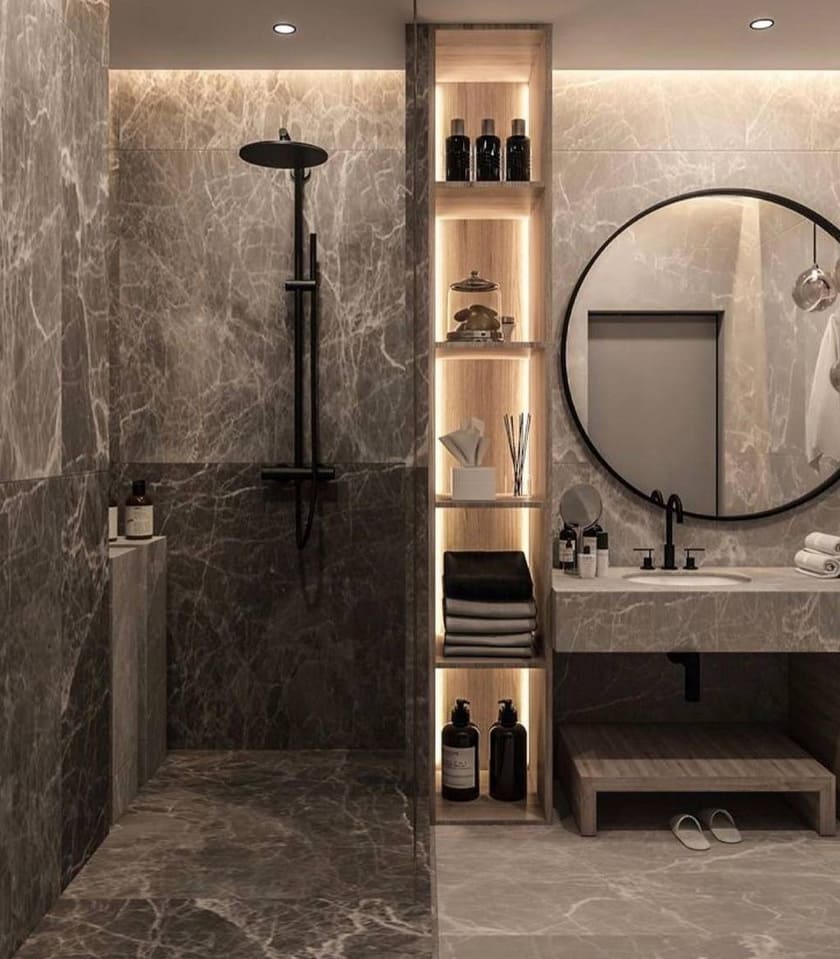Curbless showers have gained popularity in modern bathroom designs for their sleek aesthetics, accessibility benefits, and seamless integration with contemporary interior styles. These showers, characterized by their level entry without a raised curb or step, offer a range of advantages and considerations worth exploring before integrating them into your home.
Pros of Curbless Showers:
Accessibility and Universal Design: Curbless showers are inherently accessible, catering to individuals with mobility challenges or those who prefer a barrier-free entry. This design aligns with universal design principles, allowing easy access for people of all ages and abilities.
Aesthetic Elegance: The absence of a curb creates a visually appealing and open appearance, making the bathroom space feel more expansive and luxurious. Curbless showers contribute to a seamless, contemporary design aesthetic, enhancing the overall appeal of the bathroom.
Safety and Convenience: Without a curb or step to navigate, curbless showers minimize the risk of tripping or slipping, providing a safer bathing experience. They also facilitate easy cleaning, as there are no edges or corners where dirt and grime can accumulate.
Design Flexibility: The lack of a curb allows for greater design flexibility, enabling various flooring materials (such as tiles, stone, or wood) to flow seamlessly from the bathroom into the shower area. This cohesive design creates a sense of continuity and unity in the space.
Future Home Value: Curbless showers, being a contemporary and desirable feature, can potentially add value to a home. Many homebuyers seek modern and accessible bathroom designs, making curbless showers an attractive selling point.

Cons of Curbless Showers:
Waterproofing Challenges: Proper waterproofing is crucial in curbless showers to prevent water from leaking into adjacent areas. The absence of a curb necessitates meticulous installation and waterproofing techniques to ensure effective drainage and moisture containment.
Cost and Installation Complexity: Building a curbless shower often requires specialized construction techniques and expertise. The installation process might involve structural modifications, slope adjustments, and the use of specific materials, potentially increasing installation costs compared to traditional showers.
Potential Drainage Issues: Adequate drainage is essential in curbless showers to prevent water pooling outside the shower area. Improper drainage can lead to water accumulation, causing slippery floors and potential water damage to surrounding areas.
Limited Splash Containment: The absence of a curb means there is less containment for water splashes compared to traditional showers with a raised curb. This might result in water spreading further across the bathroom floor, requiring careful design considerations to minimize splashing.
Retrofitting Challenges: Retrofitting an existing bathroom to accommodate a curbless shower might pose challenges due to existing plumbing, structural constraints, and the need for additional space for proper slope and drainage.
Conclusion
Curbless showers offer an array of benefits, including accessibility, aesthetic appeal, and safety advantages. However, they also come with challenges related to installation complexity, waterproofing requirements, and potential drainage issues. Before opting for a curbless shower, careful consideration of budget, space, and the expertise of professional installers is crucial to ensure a successful and functional integration within your bathroom space. When executed correctly, a well-designed curbless shower can significantly enhance the overall functionality and visual appeal of a modern bathroom, providing an inviting and inclusive bathing experience.



